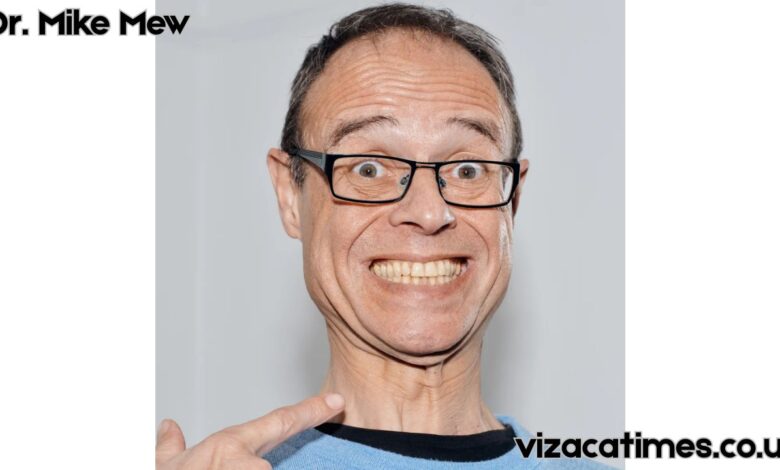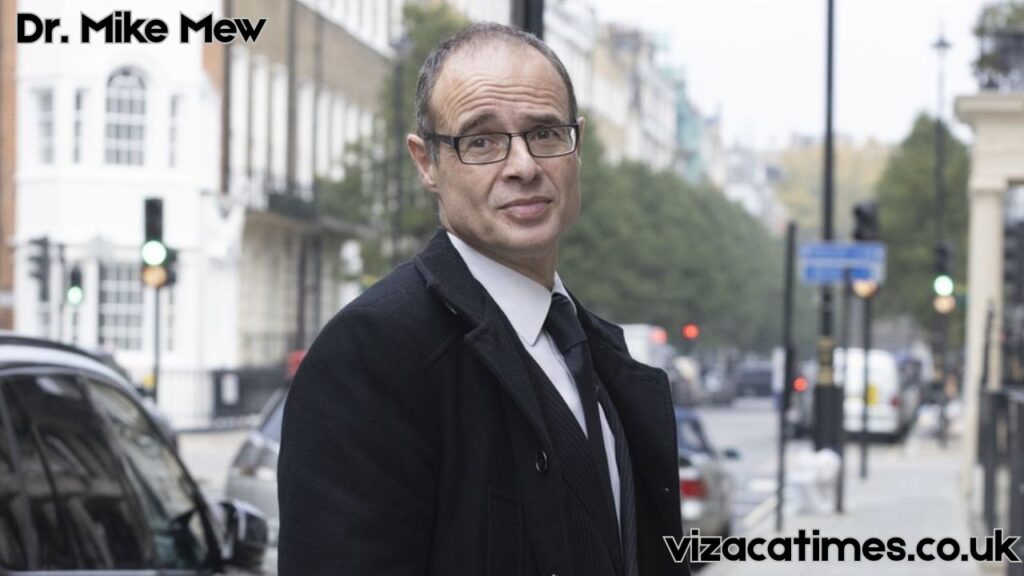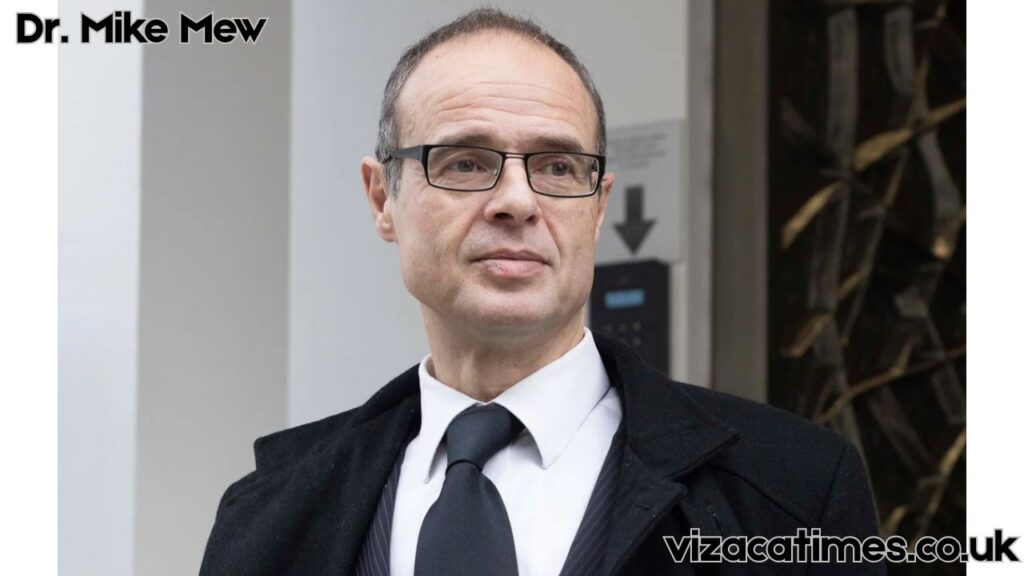Dr. Mike Mew: A Controversial Voice in Modern Orthotropics and Dental Science

Introduction
In the world of modern dentistry and facial development, few names have sparked as much discussion and public interest as Dr. Mike Mew. A British orthodontist known for promoting a method called “orthotropics,” Dr. Mike Mew has become a central figure in an ongoing debate about traditional orthodontic practices, facial growth guidance, and self-managed health techniques.
From his clinical work to his widespread presence on YouTube and academic platforms, Dr. Mike Mew continues to challenge conventions in orthodontics, drawing both criticism and admiration. His followers praise his alternative approach to facial structure and jaw alignment, while others in the dental field question the scientific rigor behind his theories.
This article explores the rise of Dr. Mike Mew, his principles, the controversy surrounding his work, and the global reach of his philosophy.
Who Is Dr. Mike Mew?

Dr. Mike Mew is a qualified orthodontist based in the United Kingdom, most commonly associated with the London School of Facial Orthotropics. His educational background includes training in conventional orthodontics, yet he chose to depart from traditional methodologies in favor of a more holistic, postural-based model known as orthotropics.
Born into a lineage of dental professionals, Dr. Mike Mew is the son of Dr. John Mew, who initially developed the orthotropic theory. Building on his father’s legacy, Dr. Mike Mew became the public face of this movement, using both scientific forums and social media to share his ideas.
What Is Orthotropics?
Orthotropics is the central practice promoted by Dr. Mike Mew, which focuses on guiding facial growth in children and influencing jaw structure in adults through non-invasive, posture-based techniques. Rather than relying on traditional braces and extractions, Dr. Mike Mew advocates for tongue posture, proper breathing, and facial muscle alignment to naturally correct underdeveloped jaws.
This philosophy suggests that environmental factors like mouth breathing, poor posture, and dietary habits contribute to what Dr. Mike Mew calls “craniofacial dystrophy”—a modern epidemic affecting facial form and function.
For those interested in non-surgical approaches to facial development, Dr. Mike Mew offers a compelling, though controversial, alternative.
Online Presence and Educational Outreach
Dr. Mike Mew is widely recognized for his educational content online, especially on YouTube. His videos explaining facial development, mewing techniques (named after him and his father), and orthotropic principles have attracted millions of views.
Through lectures, Q&A sessions, and detailed demonstrations, Dr. Mike Mew has reached an audience far beyond the academic world. Many credit his approachable teaching style and visual explanations with making complex orthodontic concepts accessible to laypeople.
It’s through this online platform that Dr. Mike Mew has found a unique balance between professional authority and social media influencer—a rare combination in the medical and dental fields.
The Rise of “Mewing”
One of the most viral ideas associated with Dr. Mike Mew is the practice of “mewing”—a set of techniques designed to improve facial structure by consciously adjusting tongue position and jaw posture. This trend, while based on principles of orthotropics, has taken on a life of its own across platforms like TikTok, Reddit, and Instagram.
Proponents claim that mewing has helped them develop sharper jawlines, alleviate breathing issues, or even reduce the need for surgery. However, critics argue that these claims lack rigorous, peer-reviewed evidence.
Still, for many, Dr. Mike Mew remains the original voice behind the movement, seen as a thought leader pushing the boundaries of orthodontic norms.
Controversy and Professional Scrutiny
While Dr. Mike Mew has amassed a significant online following, his work has also drawn intense scrutiny from professional orthodontic boards and regulatory bodies. In 2023, Dr. Mike Mew faced disciplinary hearings for allegedly breaching the General Dental Council’s standards regarding treatment claims and methods not supported by mainstream evidence.
The case sparked global debate: is Dr. Mike Mew a medical maverick unfairly silenced, or is he promoting pseudoscience without adequate safeguards?
Many in the dental community have expressed concern that his teachings could mislead patients or downplay the risks of avoiding conventional treatment. Meanwhile, his defenders argue that innovation often faces resistance before it’s accepted, and that Dr. Mike Mew is simply ahead of his time.
Global Influence and Support Communities
Regardless of professional opinion, Dr. Mike Mew has undoubtedly inspired a large international following. Online forums, YouTube channels, and support groups around orthotropics and facial posture frequently cite Dr. Mike Mew as their primary source of information.
He’s featured in podcasts, blogs, and wellness events, with some followers even documenting years of facial transformation they attribute to his guidance.
For those dissatisfied with mainstream orthodontics, Dr. Mike Mew offers hope, autonomy, and a philosophy of natural health that resonates with broader holistic trends.
Criticism and Counterarguments
Critics of Dr. Mike Mew often point to the lack of large-scale clinical studies supporting the efficacy of orthotropics, especially for adults. Most conventional orthodontists maintain that while jaw posture and breathing matter, they cannot substitute structural correction in moderate to severe cases.
Some medical professionals also worry that self-directed “mewing” could lead to unrealistic expectations or improper technique. The biggest concern is that patients might delay seeking proven medical treatments in favor of internet-based solutions.
Dr. Mike Mew himself acknowledges that more research is needed, but asserts that the academic environment has been hostile to such exploration.
Educational Credentials and Legacy
Dr. Mike Mew holds formal qualifications in orthodontics and has presented at numerous international conferences. Despite the controversy, he remains committed to educational outreach and the development of future practitioners through the London School of Facial Orthotropics.
His educational materials, courses, and mentoring programs aim to train a new generation of orthodontists willing to think beyond the bracket-and-wire paradigm.
Whether orthotropics becomes a widely accepted practice or remains on the fringe, Dr. Mike Mew is shaping its future.
What the Future Holds

The future of Dr. Mike Mew is likely to include both continued advocacy and academic challenge. As more people become aware of his teachings, the need for deeper scientific evaluation will increase. Journals, institutions, and universities may begin to assess orthotropics with greater objectivity—either validating or discrediting the model.
Whatever the outcome, Dr. Mike Mew has succeeded in forcing a conversation within dentistry that might otherwise have remained buried: what role does function play in facial form, and how much power do patients have over their own development?
Conclusion
Dr. Mike Mew stands at the intersection of science, controversy, and digital influence. For some, he is a pioneering orthodontist who dares to challenge convention. For others, he represents the danger of medical advice divorced from peer review.
Regardless of where one falls on that spectrum, it is undeniable that Dr. Mike Mew has shaped public discourse around facial development in a profound and lasting way. With his combination of clinical training, media outreach, and bold hypotheses, Dr. Mike Mew has become a figure who cannot be ignored—by professionals or the public.
Whether his ideas evolve into mainstream practice or remain alternative theory, the name Dr. Mike Mew is firmly etched in the modern orthodontic conversation.
Also Read : Brandon Dujon: Rising Star in the Football World



